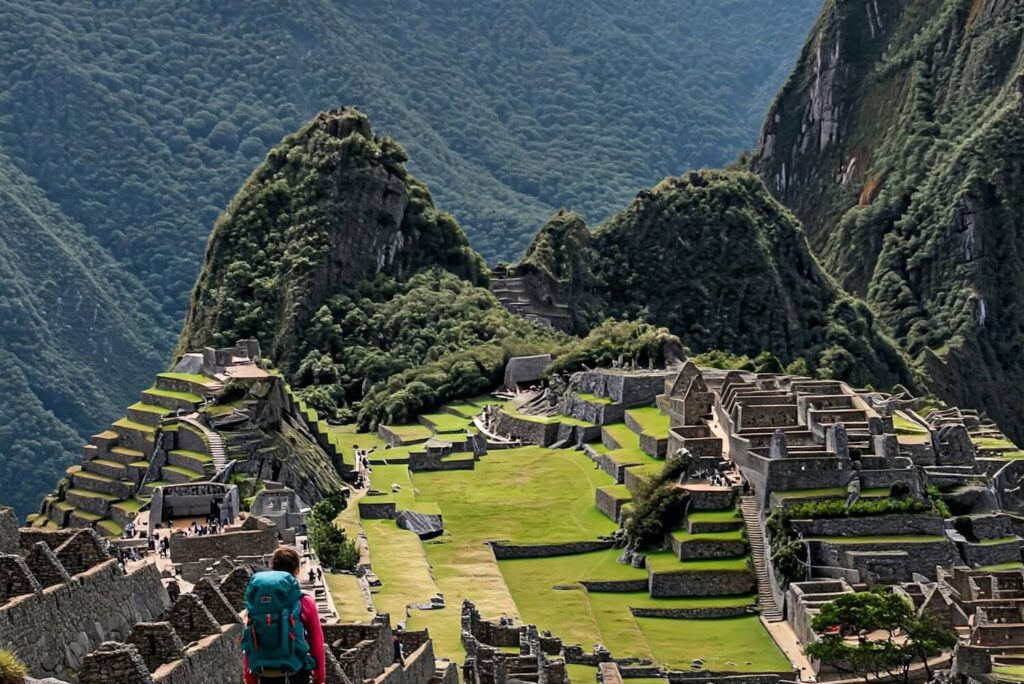Introduction to the Canadian Rockies
The Canadian Rockies are a stunning mountain range that spans the provinces of Alberta and British Columbia, showcasing some of the most breathtaking landscapes that North America has to offer. This iconic destination is renowned for its high peaks, deep blue lakes, and abundant wildlife, making it an ideal location for nature lovers and adventure enthusiasts alike. The mountains are characterized by their jagged, towering summits, which are often capped with snow, providing a striking contrast against the clear skies and vibrant forests.
One of the most remarkable features of the Canadian Rockies is their unique geological history. Formed over millions of years through tectonic activity and erosion, these mountains present a captivating array of rock formations and fossils. Visitors can witness the intricate processes that have shaped the landscape by exploring the various trails and viewpoints throughout the area. Additionally, the colorful mineral deposits found in the rocks contribute to the region’s distinctive scenery, creating a visual feast for the eyes.
The ecosystems within the Canadian Rockies are diverse and teeming with life. The area is home to a wide variety of flora and fauna, ranging from towering coniferous trees to delicate wildflowers that bloom in the warmer months. As visitors traverse the winding roads and hiking trails, they may encounter wildlife such as elk, bears, and mountain goats, all of which thrive in the rich habitats offered by this rugged terrain. The pristine lakes, such as Lake Louise and Moraine Lake, are not only picturesque but also serve as critical habitats for various aquatic species.
These natural wonders, combined with the numerous outdoor activities available, make the Canadian Rockies a must-visit destination for travelers seeking both adventure and tranquility. The region invites exploration, whether through hiking, biking, or simply taking in the awe-inspiring vistas, ensuring that each visit leaves an indelible mark on the heart and mind of every traveler.
Planning Your Route
When embarking on a road trip through the Canadian Rockies, careful planning of your route is essential to ensure a memorable experience. The two main highways that facilitate access to the region are the Trans-Canada Highway (Highway 1) and the Icefields Parkway (Highway 93). The Trans-Canada Highway serves as the primary artery for travelers, connecting major cities and attractions. Meanwhile, the Icefields Parkway is renowned for its stunning views, linking Jasper National Park and Banff National Park, offering a breathtaking journey through the heart of the Rockies.
It is advisable to plan your stops at key locations such as Lake Louise, Moraine Lake, and the Columbia Icefield. Each of these landmarks boasts unique features, from glacial lakes to dramatic peaks. When planning your journey, consider the approximate driving times between these points. For instance, the stretch between Banff and Jasper via the Icefields Parkway takes about three hours without stops; however, it is recommended to allocate a full day to fully enjoy the views and make stops at lookout points.
Travelers should also take into account the best times of year to embark on their adventures. The summer months (June to September) present optimal weather conditions; however, they also bring larger crowds. Alternatively, the shoulder seasons of spring and fall offer fewer tourists and stunning seasonal colors, though visitors should be prepared for variable weather. Winter months can create challenging road conditions, but they also provide an opportunity for winter sports enthusiasts. Always check road conditions ahead of time using reliable resources, as weather can greatly influence travel plans in the Canadian Rockies.
Banff National Park: The Crown Jewel
Banff National Park stands as one of the premier destinations in the Canadian Rockies, renowned for its breathtaking landscapes and diverse recreational activities. Established in 1885, it is Canada’s oldest national park and has come to symbolize natural beauty and conservation efforts. A must-visit attraction within the park is Lake Louise, a picturesque glacial lake famous for its vibrant turquoise waters and surrounding mountain peaks. Visitors can enjoy a leisurely walk along the lakeside or embark on more strenuous hiking trails that lead to stunning viewpoints.
Another iconic site is Moraine Lake, celebrated for its striking blue color and the Valley of the Ten Peaks backdrop. The serene beauty of Moraine Lake attracts photographers and nature enthusiasts alike. During summer, visitors can rent canoes to explore the lake’s serene waters, or hike the nearby trails that offer spectacular views of the Canadian prairie landscape. In the winter months, the area transforms into a winter wonderland, ideal for skiing and snowboarding at the close-by ski resorts.
The town of Banff, nestled within the park, serves as a hub for tourists seeking to experience the local culture and dining. With numerous restaurants offering Canadian delicacies and international cuisine, food lovers will find plenty to savor. Additionally, the vibrant arts community showcases a range of galleries and local crafts. For adventure seekers, the park provides a myriad of activities including hiking, biking, rock climbing, and wildlife viewing. Banff National Park not only caters to outdoor sports enthusiasts but also to those who appreciate leisure in nature. Overall, the combination of stunning natural sights, rich cultural experiences, and numerous activities makes Banff National Park a crown jewel of the Canadian Rockies, truly deserving a spot on any traveler’s itinerary.
Icefields Parkway: Scenic Drive of a Lifetime
The Icefields Parkway, stretching approximately 232 kilometers between Jasper and Banff, is often heralded as one of the most picturesque roads in the world. This magnificent drive presents a captivating journey through the heart of the Canadian Rockies, where every turn reveals breathtaking vistas and natural wonders. Along this scenic route, travelers can find numerous iconic stops that collectively enhance the experience of this remarkable drive.
One of the most celebrated attractions along the Icefields Parkway is the Columbia Icefield, an expansive glacier that draws visitors from around the globe. Here, one can embark on guided tours to explore the Athabasca Glacier, where tourists are afforded a rare opportunity to walk on ancient ice. The surrounding landscapes are equally stunning, with panoramic views of the glaciers and the impressive peaks of the Rockies. A visit to the Glacier Skywalk also allows for a unique perspective, showcasing magnificent landscapes from a glass-floored platform that extends over a stunning canyon.
Another noteworthy stop is Athabasca Falls, famous for its powerful flow and breathtaking surroundings. The falls cascade with a ferocious intensity, carving through the canyon and presenting spectacular views. Visitors can traverse the easy walking paths that lead to various lookout points for optimal viewing. Furthermore, the numerous viewpoints along the Icefields Parkway offer opportunities to capture awe-inspiring photos of the majestic mountains, verdant valleys, and iconic glaciers that define this UNESCO World Heritage Site.
The Icefields Parkway serves as an invitation to experience the grandeur of nature. With each stop, travelers are rewarded with an ever-changing panorama of the Canadian Rockies that instills a profound appreciation for the great outdoors. Whether one seeks adventure or tranquility, this scenic drive provides an unforgettable journey through one of Canada’s most captivating landscapes.
Jasper National Park: A Nature Lover’s Paradise
Jasper National Park, positioned in the heart of the Canadian Rockies, is a haven for nature enthusiasts and adventure seekers alike. Established in 1907, this expansive park spans over 11,000 square kilometers of pristine wilderness, showcasing an array of stunning landscapes, from towering mountains to lush forests and tranquil lakes. As a UNESCO World Heritage site, Jasper is renowned for its exceptional biodiversity and breathtaking natural beauty, inviting visitors to explore its many offerings.
One of the park’s most iconic features is Maligne Lake, a striking turquoise body of water surrounded by jagged peaks. This picturesque lake is not only famous for its scenic views but also for opportunities to engage in various activities such as canoeing and boat tours. The iconic Spirit Island, often photographed for its stunning beauty, can be reached by guided cruises or kayak rentals, creating unforgettable memories for visitors. Similarly, Athabasca Falls, a powerful waterfall located a short drive from Jasper town, captivates guests with its dramatic 23-meter drop and impressive volume of water, particularly during the spring melt.
Alongside its natural attractions, the vibrant Jasper town offers a charming experience for travelers seeking local culture. With a variety of shops, restaurants, and accommodations, it serves as an excellent base for exploring the park. Visitors can immerse themselves in the outdoor lifestyle by biking, hiking, and wildlife watching, with opportunities to encounter elk, deer, and even bears in their natural habitat.
Jasper’s designation as a Dark Sky Preserve adds another layer to its allure, offering unparalleled stargazing experiences. With minimal light pollution, the park becomes a canvas of cosmic wonders, allowing both amateur and seasoned astronomers to admire the Milky Way and seasonal meteor showers. This combination of natural beauty, outdoor activities, and a peaceful environment makes Jasper National Park a must-visit destination for nature lovers traveling through the Canadian Rockies.
Yoho National Park: Hidden Gems
Yoho National Park, nestled in British Columbia, is a treasure trove for travelers seeking a more tranquil experience in the Canadian Rockies. While many visitors flock to renowned sites, such as Lake Louise and Banff, Yoho offers its own unique and lesser-known attractions that promise breathtaking beauty and serenity.
One of the park’s highlights is Emerald Lake, often lauded for its vivid turquoise waters that reflect the towering peaks surrounding it. While some may rush to the more popular lakes, those who take the time to explore Emerald Lake will find a peaceful escape, with opportunities for canoeing or simply savoring the scenery along its picturesque trails. The Emerald Lake Lodge, with its rustic charm, provides an idyllic spot for contemplation and relaxation amidst nature.
Another remarkable feature of Yoho is Takakkaw Falls, one of Canada’s highest waterfalls. Although it captures attention due to its height, many overlook the serenity that envelops the area. The falls gush with an impressive 254 meters of cascading water, but the surrounding trails offer different viewpoints that allow visitors to fully appreciate this natural marvel without the usual crowds. The sound of the thundering water combined with the lush surroundings makes for a truly remarkable experience.
Lastly, the Spiral Tunnels, a feat of engineering, showcase a fascinating aspect of the region’s railway history. The tunnels, which allow trains to navigate the steep terrain, provide an opportunity for visitors to witness the interplay between human ingenuity and nature. Observing a train travel through these spiraling paths is a spectacle that is rare and awe-inspiring.
By venturing off the beaten path in Yoho National Park, travelers can immerse themselves in the tranquility and natural beauty that this area has to offer. The hidden gems of Emerald Lake, Takakkaw Falls, and the Spiral Tunnels each present unique opportunities for connection with nature, inviting exploration and appreciation beyond the more frequented sights of the Canadian Rockies.
Kootenay National Park: A Contrast of Landscapes
Kootenay National Park, located in the southeastern portion of British Columbia, is a landscape of remarkable contrasts that attracts nature enthusiasts and curious travelers alike. Spanning over 1,400 square kilometers, the park showcases a stunning array of ecosystems ranging from lush wetlands and dense coniferous forests to parched grasslands and rugged mountain terrains. Each biome offers unique flora and fauna, making it a paradise for wildlife watchers and photographers.
One of the park’s standout attractions is the soothing Radium Hot Springs. Visitors can indulge in the warm, mineral-rich waters that are known for their therapeutic properties. Surrounded by dramatic cliffs and forested landscapes, the hot springs provide an ideal spot for relaxation after a day of exploration. This serene environment offers a perfect contrast to the dazzling vistas of the Kootenay Valley, where panoramic views inspire awe and contemplation.
Another remarkable feature of Kootenay National Park is the Paint Pots, an area steeped in natural artistry. Here, mineral-rich springs have created vibrant, ochre-colored mud deposits, offering a striking visual phenomenon that speaks to the earth’s geological history. This area is not only captivating but serves as an excellent spot for short treks, allowing visitors to immerse themselves in the beauty of nature while enjoying educational aspects of the ecosystem.
For those with a penchant for hiking, Kootenay National Park features numerous trails catering to all skill levels. Whether opting for a leisurely stroll or a challenging hike, adventurers will experience the park’s diverse landscapes firsthand. The variety of trails also leads to encounters with various wildlife species, including deer, bears, and a myriad of bird species, enriching the overall experience of the park. Kootenay National Park is indeed a testament to Canada’s natural beauty, making it a must-visit during a road trip through the Canadian Rockies.
Wildlife Spotting: What to Expect
The Canadian Rockies are renowned for their stunning landscapes and diverse ecosystems, offering visitors a unique opportunity to observe an array of wildlife in their natural habitat. When embarking on a road trip through this majestic region, one can expect to encounter species such as moose, elk, bears, and mountain goats. These animals are integral to the ecosystem and often found in areas where food sources are abundant.
Moose are frequently sighted near lakes and wetlands, particularly in the early morning or late afternoon. Their large size makes them relatively easy to spot among the trees, though travelers should maintain a safe distance. Elk, known for their impressive antlers, are commonly seen in grassy meadows. The rutting season in September and October is an exceptional time to observe these majestic creatures engaging in mating displays.
Black bears and grizzly bears are iconic inhabitants of the Rockies. The best times to view these bears are during late spring and summer when they emerge from hibernation and are foraging for food. It’s essential to remember that while these encounters can be thrilling, safety should always be a priority. Travelers are advised to keep a minimum distance of 100 meters from bears and to stay in their vehicles for protection. For mountain goats, lookout points along highways and intersections are ideal viewing spots, particularly during the early morning hours.
To enhance wildlife spotting experiences, familiarize yourself with local regulations and guidelines for wildlife encounters. Bringing binoculars and a camera with a zoom lens can also provide an excellent opportunity to capture the moment without disturbing the animals. Being patient and remaining quiet while observing wildlife can significantly increase the chances of sightings. By respecting wildlife habitats and maintaining a safe distance, visitors can enjoy the remarkable biodiversity that the Canadian Rockies have to offer.
Conclusion: Making the Most of Your Road Trip
Embarking on a road trip through the Canadian Rockies is undoubtedly an exhilarating experience that encompasses breathtaking landscapes, diverse wildlife, and numerous opportunities for outdoor activities. The stunning national parks, such as Banff and Jasper, offer iconic sights, including turquoise glacial lakes, towering mountain peaks, and picturesque valleys. Each stop during your journey, from the historic town of Canmore to the majestic Icefields Parkway, presents a unique opportunity to connect with nature and appreciate the unparalleled beauty of this region.
As you plan your adventure through the Canadian Rockies, it is essential to prioritize responsible travel practices. Following the Leave No Trace principles is crucial in preserving the environment and the natural wonders that attract millions of visitors each year. This entails minimizing campfire impacts, respecting wildlife, and disposing of waste properly. Additionally, it’s vital to stay on marked trails to protect sensitive ecosystems and ensure that the beauty of the Rockies remains intact for generations to come.
Encouragingly, travel to such awe-inspiring places can foster a greater appreciation for nature and inspire collective efforts to protect our planet. A road trip is not merely about the destinations; it’s about the journey itself and the memories created along the way. By emphasizing environmental stewardship and responsible enjoyment of the outdoors, travelers can ensure that future visitors will also have the chance to experience the magnificence of the Canadian Rockies. So pack your bags, prepare your vehicle, and embark on an unforgettable adventure that celebrates the natural wonders of this stunning region. The Canadian Rockies await your exploration!



